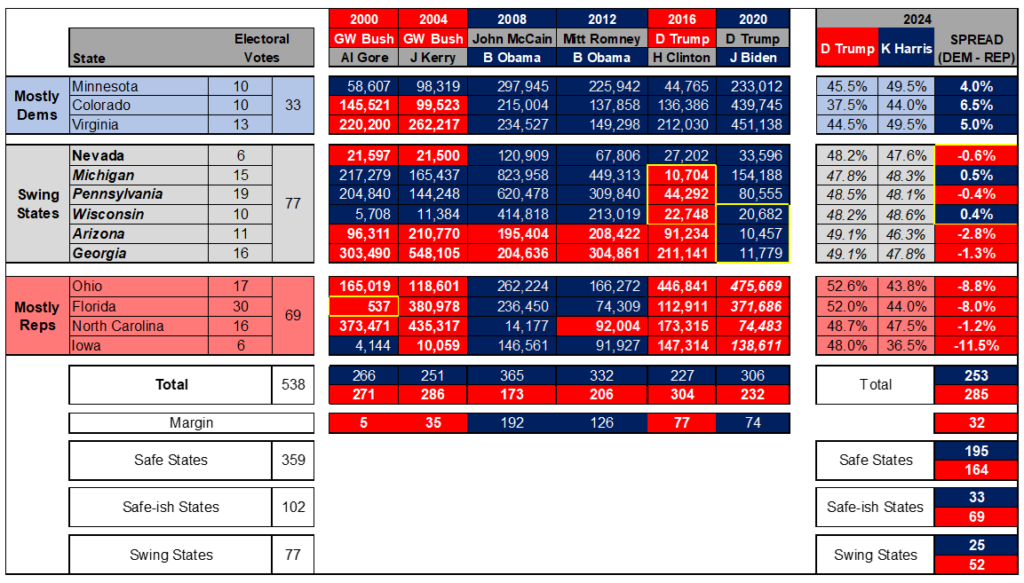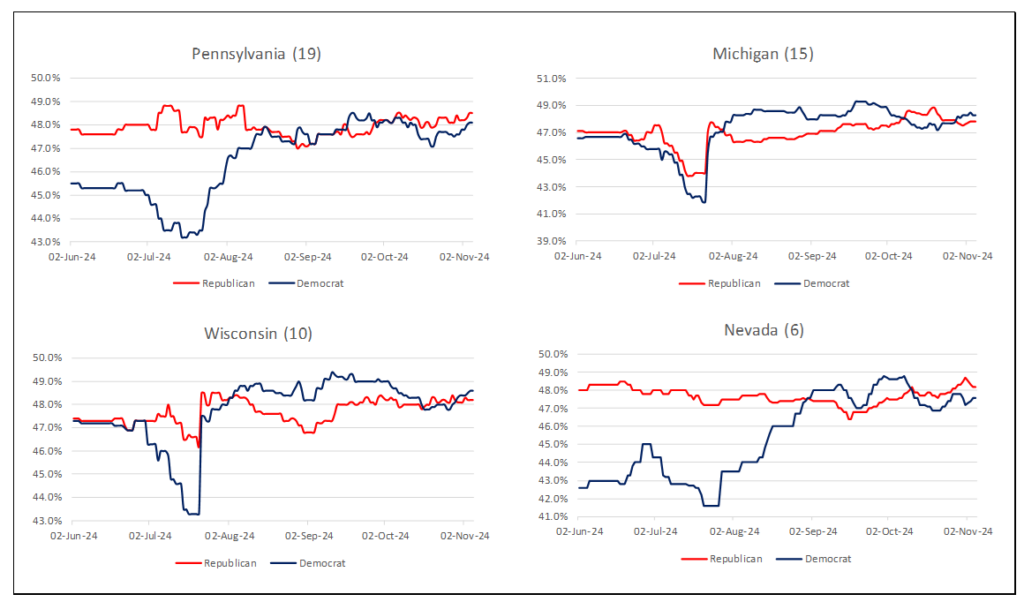Voting day (5 November) has arrived in the US, and the polls suggest that ex-US President Donald Trump has a marginal edge over US Vice-President Kamal Harris. However, the two candidates are close enough in the polls that if Pennsylvania goes to Harris, it will be sufficient to get her into the White House.
While many states should have conclusive results published by this evening (US time, so Wednesday morning [6 November] South African time), among some key swing states, we will only have the complete picture at the weekend. In this regard, we note the following:
- Michigan: The state has introduced steps to speed up counting, so the results will likely be available before the weekend (if Harris loses this one, it is unlikely that she will become president).
- Wisconsin: Mail-in ballots cannot be counted until election day, so we expect to wait until the weekend for this state’s results.
- Pennsylvania: Mail-in ballots can also not be counted until election day. In the previous election (2020), US President Joe Biden ended up with c. 80,000 more votes than Trump in Pennsylvania. Those results were not reported until Saturday (four days after the Tuesday voting day). It seems likely that there will be a similar delay this time around.
The rest of this week will likely include premature claims of victory, court challenges to results and claims of fraud. In our view, expecting a conclusive outcome before the weekend (9-10 November) is unrealistic unless the polls are very wrong, and it is a landslide victory either way. Trump edged Hilary Clinton in Michigan by c. 10,000 votes in 2016. If Trump can edge Harris in that state in these elections, it is the best chance of getting a reasonably conclusive outcome before the weekend.
As a reminder, from an investment perspective, we are also very focussed on the outcome of congressional elections. The president can only make tax and legislative changes with the support of both houses of Congress. Given how close the congressional race is likely to be, it is also unlikely that we will have a conclusive result before the weekend. US Congress comprises two chambers, the Senate and the House of Representatives. American voters will also determine who will control each chamber of Congress – all 435 seats in the House of Representatives and 34 out of 100 seats in the Senate are up for grabs. Currently, Republicans hold a majority in the House of Representatives, while Democrats control the Senate, albeit by very slim margins.
Figure 1: A summary of recent results in key swing states and polling for the current US election

Source: Anchor, Real Clear Politics, Bloomberg. *Maine (4) and Nebraska (5) – split their non-Senate electoral votes
Figure 2: The trajectory of the polling in key swing states

Source: Anchor, Real Clear Politics, Bloomberg




